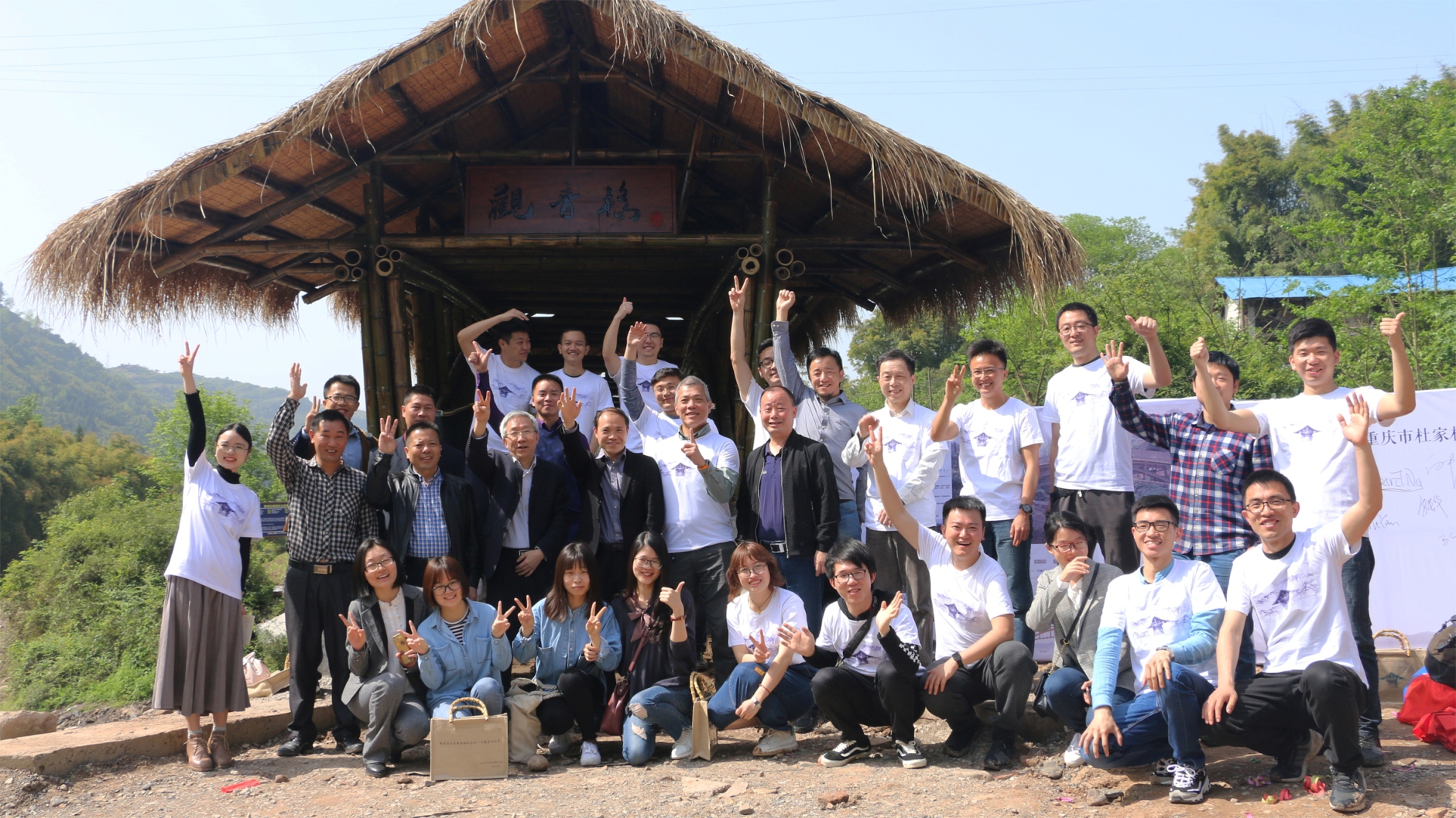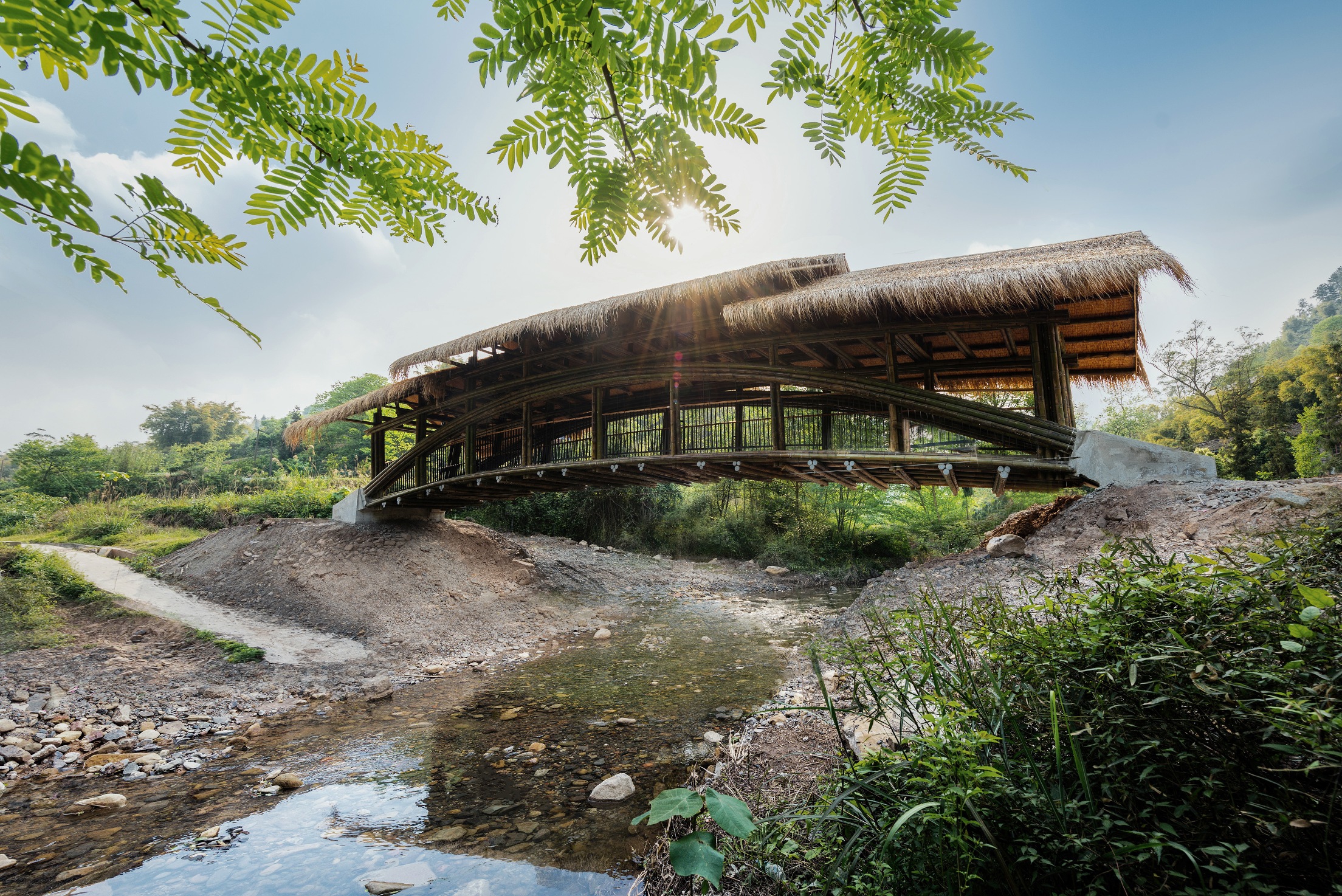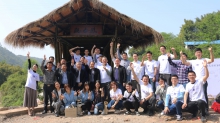CUHK
News Centre
CUHK Team Builds the Longest Bamboo Bridge in Rural Mainland
The One University One Village (1U1V) team led by Yao Ling Sun Professor of Architecture Prof. Edward NG Yan Yung of The Chinese University of Hong Kong (CUHK) has built the longest bamboo bridge in the rural mainland. The bridge, measuring 21 metres long, was completed in April 2018 at Dujia Village in the Yubei district in Chongqing. It marks a breakthrough in modern bamboo bridge building.
Local resources and sustainable architecture
The bridge is the second “Yi Xin Qiao” project — an initiative to incorporate modern knowledge in mechanics and traditional techniques in the construction of rural bridges. Great importance is attached to the use of local resources and sustainability. The main structure of the bridge was constructed with whole moso bamboo — a material abundant in southern China. Bamboo panels were also used in the flooring. Little steel was used, only in the bolts and connecting parts.
Bamboo is an economical material, requiring only a short time to become fully grown. Its flexibility also makes it suitable for a wide range of uses. As sustainability has gained importance in architecture in recent years, bamboo has been seen increasingly as a material of great potential. However, there are several issues to be taken care of before it can replace more common materials such as wood and steel. In particular, bamboo cracks easily, is not very durable, and its structural integrity is difficult to grasp.
Technical breakthrough: an international first
In light of the challenges, “Yi Xin Qiao”’s person-in-charge and CUHK Architecture PhD student SHAO Changzhuan has formed a collaboration group with the Tsinghua University and the Chongqing Jiaotong University to investigate the bamboo structure. The group, supported by the International Centre for Bamboo and Rattan Organisation under the State Forestry Administration of China, studies the mechanics and physical properties of bamboo and the construction parts made from it. The research results were applied in the “Yi Xin Qiao” project in Dujia Village.
The bridge measures 21 metres long and 3 metres wide, with a usable surface of two metres wide. Constructed with 700 moso bamboos, it has the largest span among modern bamboo bridges in the rural mainland and can last for as long as 20 years. The structural performance of the bamboo was improved, and the material was processed with pesticide and preservative prior to construction. The successful construction of the bridge shows that the group’s research has achieved a breakthrough in using bamboo in the architectural and engineering sectors.
The application of the research result is far from one-off. It will serve as a reference for future regulations of bamboo construction. Supported by the the State Forestry Administration of China, the team is working with the China Bamboo Industry Association to develop guidelines for design and construction with bamboo. They will help promote the popularity of modern bamboo bridges in villages.
Industrialization: improve river-crossing safety in impoverished villages
According to a survey on bridge demand by the Ministry of Transport of China, the country is short of at least 10,000 rural pedestrian bridges with a span over 15 metres. The bamboo bridge design devised by the CUHK team can theoretically be applied to most impoverished villages in the country and eliminate the dangers in river-crossing. Not only will it make it more convenient for villagers to travel around, but also help improve infrastructure in the villages.
Prof. NG said, “I am happy to see the team’s breakthrough in technical research. Bamboo is an environmental material that can answer villagers’ travelling needs. The 1U1V team will continue to seek practicable solutions to rural problems and help promote sustainable development in mainland villages.”
To promote the construction of bamboo bridges in a large number of villages, the team is seeking to standardise the construction procedures by combining their research results and practical experience. More parts can then be pre-fabricated in factories and the time required for on-site construction will be shortened. This will further reduce the cost of a bridge. When parts are produced on a large scale, more bridges can be built and more villagers can be involved in the construction. This will not only help unleash the labour force in the rural areas, but also increase the villagers’ income. The villages will in turn become more environmental, habitable and beautiful.
About One University One Village (1U1V)
The One University One Village Rural Sustainable Development Assistance Programme (www.1U1V.org) was prepared and launched by Prof. Edward NG Yan Yung and Dr. Li WAN of the School of Architecture at CUHK in 2014. Its idea is to gather professional knowledge and manpower from one higher institution to help improve the environment and livelihood of one village strategically, systemically and sustainably.
Each 1U1V project is supervised by a doctoral student at the School of Architecture. The results of the project form part of the thesis, while the student’s academic research is put into practice. In the process, talents from different professional fields from overseas and the mainland work together to improve lives in villages. They help the needy, promote education, protect the environment, and support cultural, social and economic development.
The first 1U1V project was in Qiunatung Village, Nujiang Prefecture, Yunnan, in which Peking University and Hong Kong Polytechnic University were invited to conduct a public health survey. Recently, another programme to promote early childhood development was launched there with Chung Chi College of CUHK and the Education University of Hong Kong. In 2014, in response to the aftermath of an earthquake, the 1U1V team launched a project to rebuild Guangming Village in Zhaotung City, Yunnan, with Kunming University of Science and Technology and the University of Cambridge. Two anti-seismic rammed-earth demonstration village houses were built. The project was recognised by multiple international awards. In particular, it was named World Building of the Year 2017 and won the Architectural Review (AR) House Awards 2017.
A group photo taken in the completion ceremony of the “Yi Xin Qiao” in Dujia Village, in the Yubei district in Chongqing on 8 April 2018.





